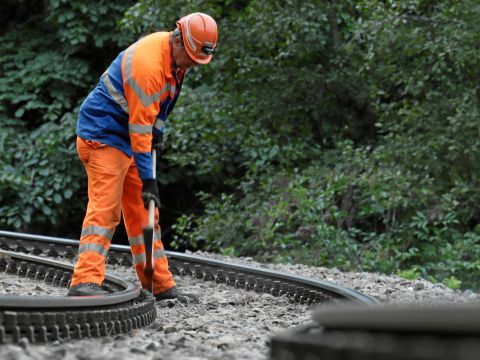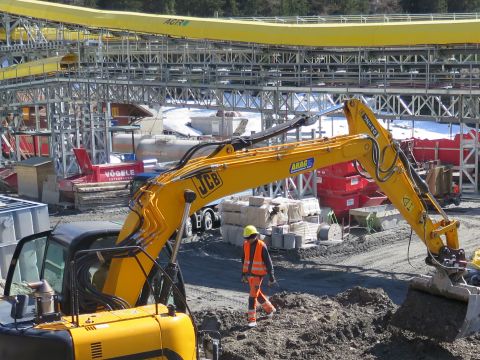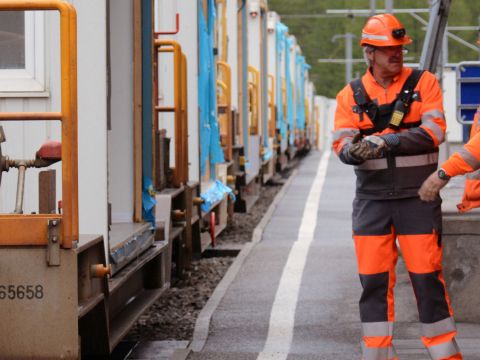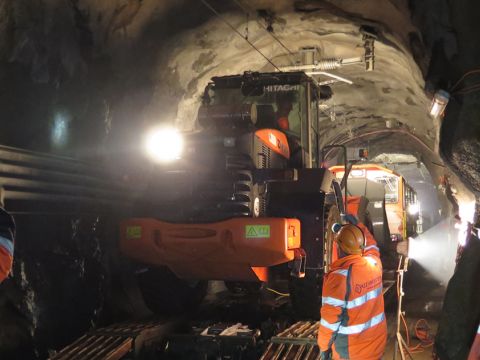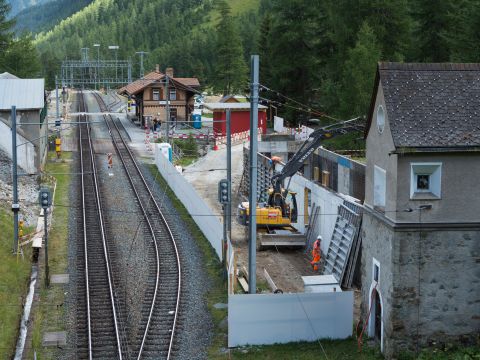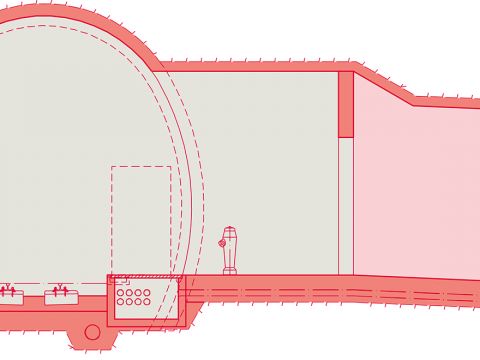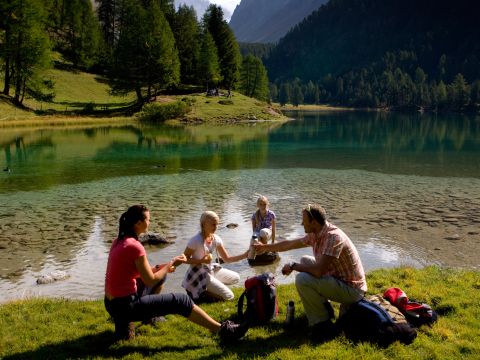The construction site
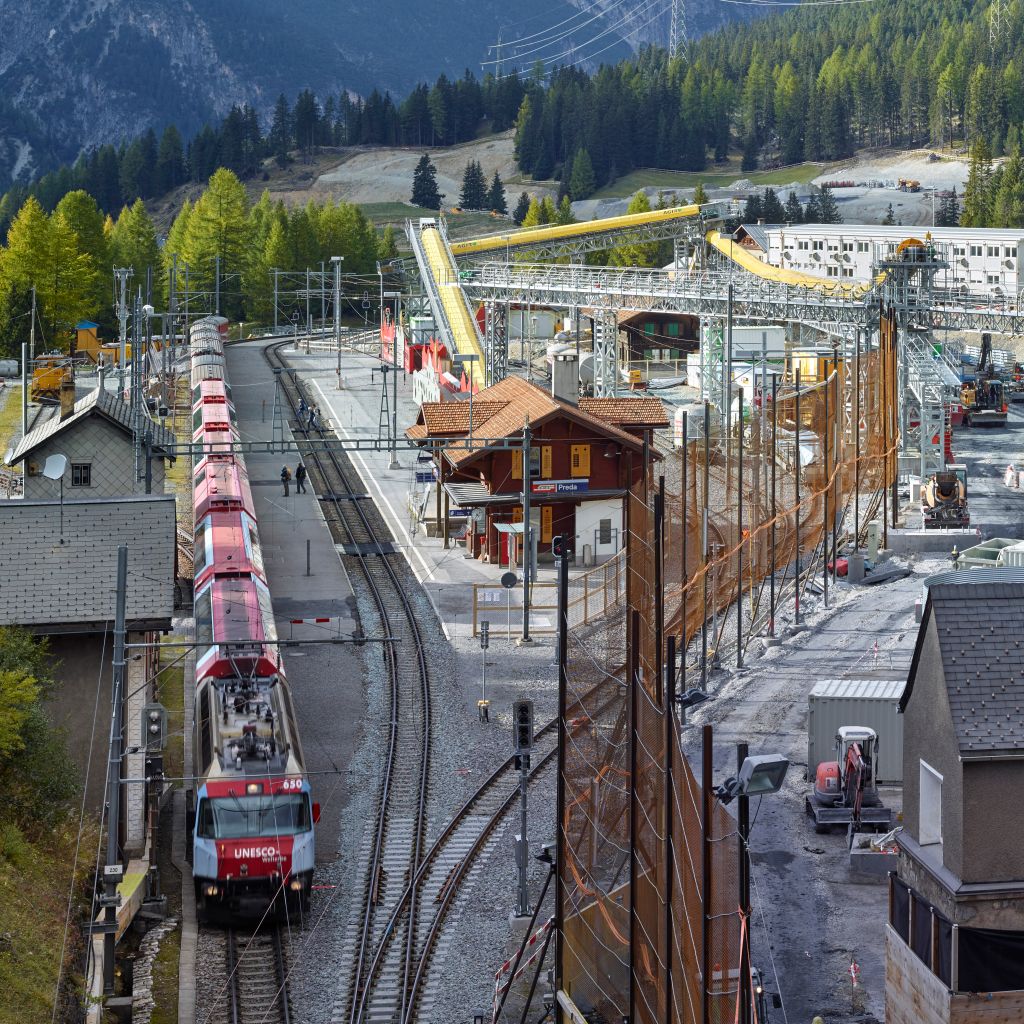
Work is being done on your behalf in Albula. The original Albula Tunnel, which has been linking up the Engadin region faithfully for more than 110 years, is coming to the end of its useful life, and now needs either extensive repairs or complete rebuild. After examining in detail the two alternatives of repairing or rebuilding, the RhB took the decision in 2010 to build a completely new metre-gauge railway tunnel, and convert the existing structure into a safety tunnel. The clinching arguments in this respect were the relatively minor difference in cost, the lack of relevant disruption to timetabling, and considerably improved safety.
The new Albula Tunnel does not in principle suppose any increase in capacity. The section between Spinas and Preda will continue to be single-track, as there are no long-term plans for the timetabling of additional traffic. It was for this reason that the expensive option of a two-track tunnel was not taken up. However, the new tunnel will mean an extension of the token system currently in force between Preda and Sanam. A token system ensures that all trains entering and leaving a particular section of line are controlled and monitored. The train only receives the token for entering the corresponding section of line if it is free of other trains. A token system is in force between the northern and southern entrances of the old Albula Tunnel. This means that only one train can ever be present in the tunnel at a given time. In the new Albula Tunnel, an additional token-transfer point in the middle of the almost six-kilometre-long tunnel will allow two trains to operate in the tunnel in the same direction and at the same time.
-
The objectives of this centennial construction project are therefore as follows:
-
A new, single-track railway tunnel running parallel to the existing Albula Tunnel
-
Modification and extension of the stations in Preda and Spinas to make them suitable for disabled passengers
-
High levels of safety, thanks to a protected escape route running via transverse accesses that link the new tunnel to its original, refurbished counterpart
-
Continuation of railway operations during the building work
-
Sustainability – the new tunnel has been designed to stand for another hundred years
-
The structure conforms to the demanding requirements of both an Alpine environment and the corresponding UNESCO World Heritage specifications
Moreover, the operating concept is based on the following key factors:
|
Maximum train speed: |
120km/h |
||
|
Train frequencies: |
According to timetable – with no special or service trains: 45 passengers and goods trains per day |
||
|
Suspension of traffic at nigh: |
No trains are to run through the tunnel between 22.30 and 5.00 hrs. Routine maintenance tasks can be carried out during this period. |
Financing the Albula Tunnel
Guaranteeing the mobility needs of Switzerland’s population, regardless of their region of residence, is one of the basic commitments of the country’s federal government. The total cost of financing the Albula Tunnel (about CHF 345.5 million) has been met jointly by the federal and cantonal governments.
The Rhaetian Railway is grateful to both of them for their valuable financial assistance.
|
Tunnel building / initial construction |
61,2% |
||||
|
Railway infrastructure |
5,1% |
||||
|
Operating and safety equipment |
1,4% |
||||
|
Electrical systems |
6,1% |
||||
|
Project design, planning, site management, additional costs |
12,8% |
||||
|
Unforeseen situations |
8,7% |
||||
|
Rises in prices |
4,7% |
||||
|
Total costs of investment |
CHF 345,5 million |
You can obtain further information concerning the various topics of the construction sites at Preda and Spinas from the textes below:

